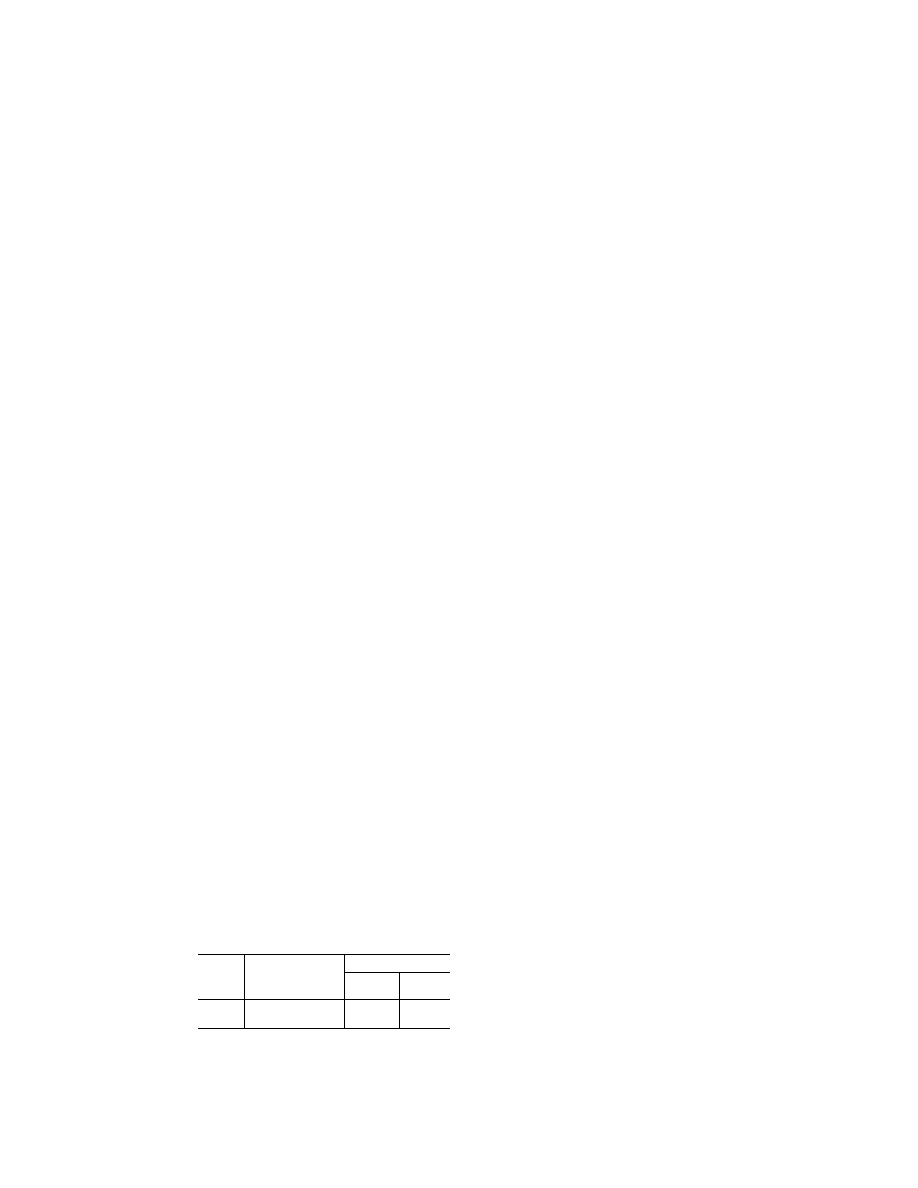
869
Federal Aviation Administration, DOT
§ 171.313
datum to the coverage limit, the PFE,
PFN and CMN limits, expressed in an-
gular terms, shall be allowed to lin-
early increase as follows:
(i) With distance along the runway
centerline extended, by a factor of 1.2
for the PFE and PFN limits and to
±
0.10 degree for the CMN limits.
(ii) With azimuth angle, by a factor
of 1.5 at the
±
40 degree and a factor of
2.0 at the
±
60 degree azimuth angles for
the PFE, PFN and CMN limits.
(iii) With elevation angle from + 9 de-
grees to + 15 degrees, by a factor of 1.5
for the PFE and PFN limits.
(iv) Maximum angular limits. The
PFE limits shall not exceed
±
0.25 de-
gree in any coverage region below an
elevation angle of + 9 degrees nor ex-
ceed
±
0.50 degree in any coverage re-
gion above that elevation angle. The
CMN limits shall not exceed
±
0.10 de-
gree in any coverage region within
±
10
degrees of runway centerline extended
nor exceed
±
0.20 degree in any other re-
gion within coverage.
N
OTE
: It is desirable that the CMN not ex-
ceed
±
0.10 degree throughout the coverage.
(f) Approach azimuth antenna char-
acteristics are as follows:
(1)
Drift.
Any azimuth angle as en-
coded by the scanning beam at any
point within the proportional coverage
must not vary more than
±
0.07 degree
over the range of service conditions
specified in § 171.309(d) without the use
of internal environmental controls.
Multipath effects are excluded from
this requirement.
(2)
Beam pointing errors.
The azimuth
angle as encoded by the scanning beam
at any point within
±
0.5 degree of the
zero degree azimuth must not deviate
from the true azimuth angle at that
point by more than
±
.05 degree.
Multipath and drift effects are ex-
cluded from this requirement.
T
ABLE
10—A
PPROACH
A
ZIMUTH
A
CCURACIES AT
THE
A
PPROACH
R
EFERENCE
D
ATUM
Error type
System
Angular error (degrees)
Ground
subsystem
Airborne
subsystem
PFE ........
±
20 ft. (6.1m)
1 2
±
0.118
°
3
..
±
0.017
°
CMN ......
±
10.5 ft. (3.2m)
1 2 4
±
0.030
°
....
±
0.050
°
Notes:
1
Includes errors due to ground and airborne equipment and
propagation effects.
2
The system PFN component must not exceed
±
3.5 meters
(11.5 feet).
3
The mean (bias) error component contributed by the
ground equipment should not exceed
±
10 feet.
4
The system control motion noise must not exceed 0.1 de-
gree.
5
The airborne subsystem angular errors are provided for in-
formation only.
(3)
Antenna alignment.
The antenna
must be equipped with suitable optical,
electrical or mechanical means or any
combination of the three, to bring the
zero degree azimuth radial into coinci-
dence with the approach reference
datum (for centerline siting) with a
maximum error of 0.02 degree. Addi-
tionally, the azimuth antenna bias ad-
justment must be electronically steer-
able at least to the monitor limits in
steps not greater than 0.005 degree.
(4)
Antenna far field patterns in the
plane of scan.
On boresight, the azi-
muth antenna mainlobe pattern must
conform to Figure 10, and the beam-
width must be such that, in the in-
stalled environment, no significant lat-
eral reflections of the mainlobe exist
along the approach course. In any case
the beamwidth must not exceed three
degrees. Anywhere within coverage the
¥
3 dB width of the antenna mainlobe,
while scanning normally, must not be
less than 25 microseconds (0.5 degree)
or greater than 250 microseconds (5 de-
grees). The antenna mainlobe may be
allowed to broaden from the value at
boresight by a factor of 1/cos
q
, where
q
is the angle off boresight. The sidelobe
levels must be as follows:
(i)
Dynamic sidelobe levels.
With the
antenna scanning normally, the dy-
namic sidelobe level that is detected by
a receiver at any point within the pro-
portional coverage sector must be
down at least 10 dB from the peak of
the main beam. Outside the coverage
sector, the radiation from the scanning
beam antenna must be of such a nature
that receiver warning will not be re-
moved or suitable OCI signals must be
provided.
(ii)
Effective sidelobe levels.
With the
antenna scanning normally, the
sidelobe levels in the plane of scan
must be such that, in the installed en-
vironment, the CMN contributed by
sidelobe reflections will not exceed the
angular equivalent of 9 feet at ap-
proach reference datum over the re-
quired range of aircraft approach
speeds.
VerDate Sep<11>2014
08:20 May 17, 2019
Jkt 247048
PO 00000
Frm 00879
Fmt 8010
Sfmt 8010
Y:\SGML\247048.XXX
247048